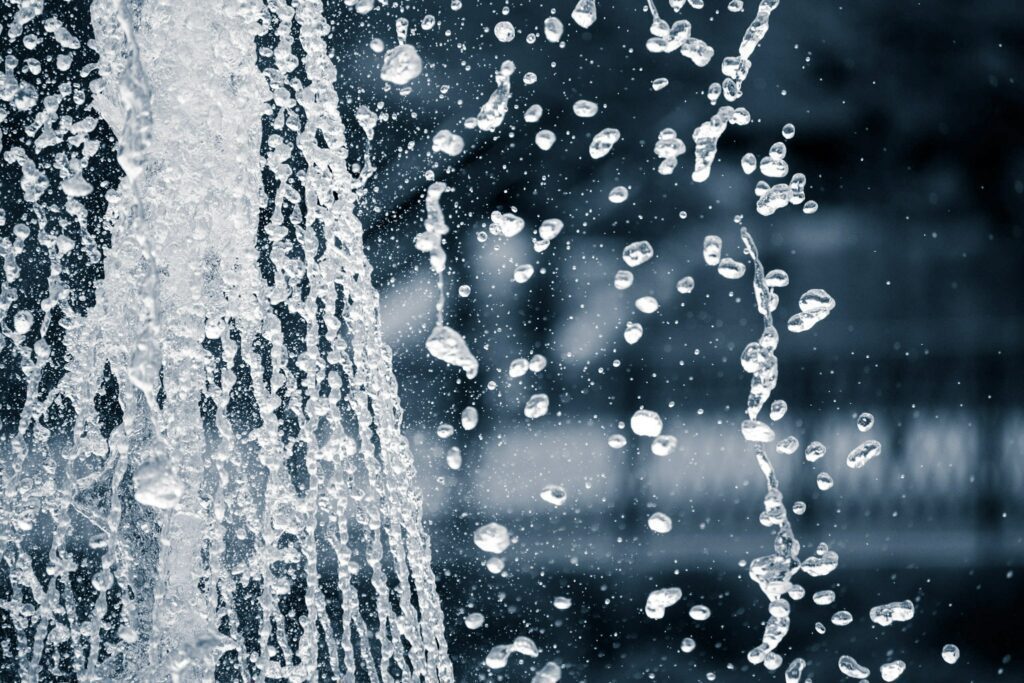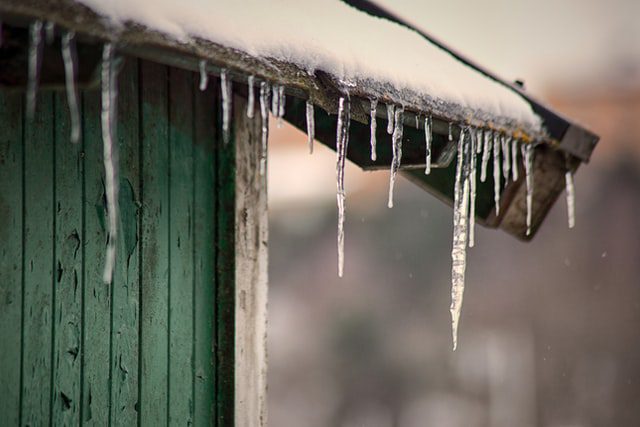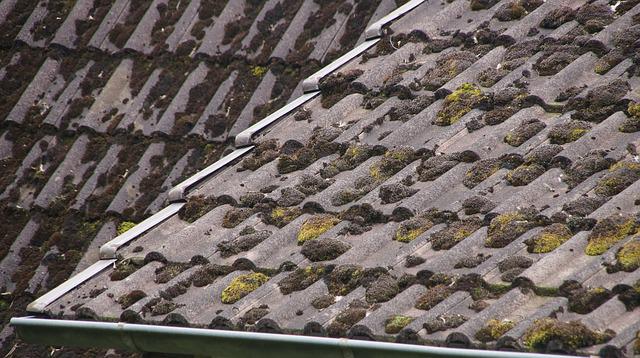

A roof valley is a meting point of changing slopes of a roof. The name comes from the valley-like look, which protects the roof from rain and snow, and reduces debris buildup.
The roof valley helps the roof slope drain water and reduces snow and ice accumulation on roof liners; thus, roof water drainage remains unimpeded. In addition to reducing the accumulation of water on the roof, this system also enhances the overall look and feel of the home.
What is a dead valley on a roof? This is simply the intersection of two roof slopes to form a valley where water cannot be drained effectively. There is more to this question which is further discussed in this article.
A section of a roof where two or more angles meet in the same spot is termed a "pitch point." If you have a complex roof with numerous pitches, dead valleys are inevitable and must be adequately safeguarded and carefully maintained.
Good home designers that understand roofing design and water movement tend to avoid leaving dead valleys, which might later cause difficulties, in their plans. When this is missed, it becomes the obligation of a trained roofing firm to discover and protect these vulnerable locations.
At the place where opposing roof slopes meet, water can flow easily down the roof through a trough formed by the intersection. The slope of a valley is usually the same as the slope of the roof as a whole.
As a result of the roof's layout, water can flow directly into these pitch spots, which often have inadequate or no drainage due to the structure's design. When two or more opposing roof slopes meet in a dead valley, there is little or no fall, which can lead to the accumulation of water and other debris.
It's normally not a big deal because the water drains quickly, but in the case of a dead valley, water cannot drain away because of the valley's extreme flatness. It can also happen when a piece of your roof meets an exterior wall that is lower than the rest of the roof.
If you don't take adequate care of a dead valley, you could end up with leaks and other major roof damage. However, we've put together this guide so that you can simply fix a dead valley roof in advance of issues arising.
Not all roofs and watersheds are treated equally by home builders and designers. A dead valley is a region on a roofing system where water cannot easily run down the roof because of the junction of two slopes or a slope with a wall.
There are two types of dead valleys: The first is when a normal valley flows into a flat wall corner instead of right off the roof, and the other is as a result of two or more slopes merging into one.
Any low-sloping roof should employ materials that can withstand gradual water runoff without early deterioration, just like any other low-sloped roof. Roofing contractors frequently shingle over these sections without the correct underlayment, which can cost homeowners hundreds of dollars in repairs.
Use a selected low-slope material the first time around to ensure your safety. There is an upfront investment, but it is necessary for your roof's longevity.

Dead valleys have water and debris have nowhere to go resulting in impeded or nonexistent proper drainage. Debris and water in that location can degrade the wood and shingles, resulting in costly repairs in the long run.
There is a serious problem with dead valleys on any roof since they are prone to accumulating rainwater, snow, leaves, and other debris. As the roofing material ages or begins to disintegrate, stored debris and water will eventually seep through the shingles and cause leaks.
As time goes on, dead valleys become a problem area for roof services, as leaking spreads to other areas of the roof, and the roof structure beneath the shingles begins to decay. When damage is severe and has continued for an extended period of time, it may be necessary to replace the roof and adjoining structural components.
Even if it is possible to fix a dead valley, if it is not done early enough or in the wrong way, it can still become a problem; your roof's lifespan will be significantly reduced if you don't fix the dead valley.
Builders and roofers frequently utilize the "solution" of running a bundle of shingles and felt paper down in an area with little to no slope. Despite what they believe, this will not endure long because using a shoddy solution like this will get you a leak in this area within three to five years.
False solutions like these have the potential to inflict significant harm. These are only a few examples:
1. Excessive roof leaks
Dead valley leaks are, of course, a major concern for everyone, and more and more leaks coming from your roof may indicate the presence of an undiscovered dead valley. Unless there is a leak, most homeowners have no idea they have a dead valley roof until it is discovered, and as long as a leak has been discovered, it doesn't mean that your dead valley problem is beyond repair.
It is possible to prevent your roof from water pooling and further damage by installing membranes and other solutions during the course of roof repairs.
2. Water and debris pooling on the roof
When it comes to leaking roofs, it's easy to see that stagnant water is the most typical culprit though this isn't the only drawback. There are various problems that pooling water creates.
In reality, bugs are drawn to stagnant water and trash in many different ways. Rooftop puddles attract mosquitoes because they provide ideal nesting conditions for the insects, and in addition, cockroaches and termites will be more likely to start nesting in your home if water seeps through the roof.
For drinking and nest-building purposes, it's a perfect area for them to go. The trash that accumulates can also be useful to other critters, which may worsen the condition of the roof.
Apart from the fact that it can lead to expensive repairs, standing water can also establish entire ecosystems that should be kept away from the property.
3. Ice and water dams

Even in situations where pooled water appears to be flowing, ice dams can inflict significant damage to a home and be a major source of leaks. To make matters worse, the presence of ice dams can lead to the creation of dead valleys where there were none before.
An ice dam forms along the roof's edge, thus preventing melting snow from properly draining off the side. Mold and mildew growth can be exacerbated as a result.
In addition, the repeated freezing and thawing of ice can lead to a wide range of physical damage, such as extensive cracking of the roof and also blistering and peeling of interior paint.
Keeping your home safe from the dangers of ice dams requires the necessary water and ice precautions to be in place.
4. Moss and Rot

Unwanted vegetation growth can find its way into even the smallest cracks and crevices in the roof, posing a serious threat. A roof that has moss, algae, or weeds growing on it is less likely to be water-resistant, which makes it more vulnerable to harm.
When it comes to roof membranes, these roots can break them apart, and a negative feedback loop can be created by allowing more water to accumulate, which in turn attracts more pests.
Water flows downhill by nature, and in most cases, rainwater flows down the gutters and away from the house. Leaves, twigs, and other debris that hold water make for an expensive roof repair in a dead valley since there is nowhere else for the water to go.
Though dead valleys might be unavoidable owing to a home's architecture, they don't have to be damaged areas that require a partial roof repair. The felt paper and shingles you'd use in a dead valley will eventually wear out from exposure to the sun, so you should expect a leak within three to five years.
Applying a modified bitumen treatment and other waterproofing methods will help prevent water from accessing the framing and causing leaks and damage.
If you want to avoid leaks and other problems caused by dead valleys on your roof, you should hire a certified roofing company with experience in this area. Your roofer is the one responsible for making the necessary repairs as many inexperienced roofers may just shingle over the region even though a dead valley requires special attention.
1. Put up an ice and water barrier
It has become customary to install an ice and water membrane and to use high-grade metal products that are custom-made to fit your application to create waterproofing on vulnerable areas of a roof.
Roof underlayment membranes are designed to prevent ice and water damage to places that are particularly prone to it, such as roof valleys. Polymer-modified bitumen is used to make ice and water protectors (also known as ice and snow shields in cold areas).
Underlayments such as roofing felt can be placed after the ice and water barrier has been put in. In addition to protecting against ice dams, the ice and water shield can also protect against rain pushed by high winds.
2. Use PVC, modified bitumen or TPO
Modified bitumen is a tough-yet-flexible waterproof membrane created by mixing asphalt with polymerized rubber or plastic and then reinforcing the mixture with fiberglass. It is an asphalt-based roofing system that offers several layers to provide leak resistance and requires minimal roof maintenance.
The rip and puncture resistance of modified bitumen outweighs that of TPO when it comes to waterproofing. There are many advantages of using modified bitumen roofing over TPO, such as its ease of repair or replacement in the event of membrane damage.
In some regions, high-quality modified bitumen is also utilized to help prevent leaks or seepage and increase water flow, as well.
As a result, it is a very adaptable solution to this widespread roofing issue, whether applied to the entire roof or only to dead valleys in specific places.
In general, TPO roll roofing is less expensive to purchase and install, but it lacks the long-lasting aesthetic of modified bitumen roofing. Leak-resistant membranes made from PVC and TPO are commonly used for waterproofing.
Thermoplastic polyolefin (TPO) is white and aids in both water drainage and heat reflection off the roof. This reduces the temperature inside the space while also preventing leaks.
PVC functions in a similar manner but is more durable and rigid than TPO.
In order for waterproofing systems to perform properly, additional drainage systems must be installed to help prevent pooling and also divert water away from the roof. It is critical that any membrane roofing you purchase comes from a trustworthy source, as the quality of these products can vary greatly.
3. Install a custom-made metal flashing
A custom-made metal flashing is probably the best solution for roof problems such as a dead valley. Installing a metal flashing can help to seal the leakage and slope the water off of the roof.
These are especially handy in dead valley corners, where water floods in the corner instead of draining off the roof. The flashing ensures that the seal will be perfect, preventing any water from spilling through though this can be an expensive and time-consuming process.
4. Have a well-designed valley

Most roofing contractors shingle over a dead valley without the necessary waterproofing steps. A dead valley roof doesn't have to be a problem, but unfortunately, many builders/roofers don't know how to deal with them, and it can lead to major water damage.
Architects are creating beautiful modern homes but don't really understand how water traffics. They build homes where water from different areas of the roof goes down into a pinch point, causing a dead valley.
By properly constructing a dead valley, the major problems can be avoided.
When a valley terminates on tile rather than the edge of a roof, it causes the most trouble. While a dead valley may appear to be a problem at first, it can survive as long as any other area of the roof with correct installation and upkeep.
Almost every roof has some sort of valley in it, and for a tile roof, an issue that may arise is when the amount and/or speed of water pouring out of the valley causes the water to splash or seep under the tile. If the end of the valley is positioned incorrectly, water will pool on the underlayment rather than on top of the tile.
Continuous accumulation of water makes the underlayment too wet. Typically, this problem will not lead to a leak right away but rather over time.
When a leak like this happens, the plywood base will have to be replaced because it will have been compromised by the leak. Installing flashing at the end of a valley helps the hard galvanized steel valley metal mold with the tile, and this type of leak may be readily prevented.
When checking for leaks, flooding of the roof can be done to establish where the leak is coming from if the water drains off. The roof has to be completely cleared of debris first to reveal any hidden areas of damage.
Any compromised shingles or tiles will have to be replaced. Before this happens, the area of damage or leakage should be stripped bare to the roofing deck.
When water bypasses the roofing underlayment, it can wet the roof deck damaging the plywood, and this can lead to rot and insect infestation. Damaged plywood sheathing has to be replaced too.
After cleaning the roof, determining the damaged area, and stripping bare the area, the new deck can be installed. The second step is to install an ice and water dam protection first, followed by the roofing underlayment.
You can follow with the flashing for an open valley or seal it for a closed valley flashing. A closed valley conceals the valley lining allowing a seamless blend of the roof slopes.
The metal flashing is installed over the underlayment but below the roof, cladding to prevent any water from seeping into the flashing of the roof.
While it may not always be feasible to prevent water and debris from building up on your roof or even ice damming, dead valley roofs should be dealt with before they become a bigger problem.
Most homeowners can't tackle repairing a dead valley on their own. Professional roofers can assess and recommend the best materials for protecting your house.
You can consult your architect when designing a new home and request that they avoid as many dead valleys as possible.
